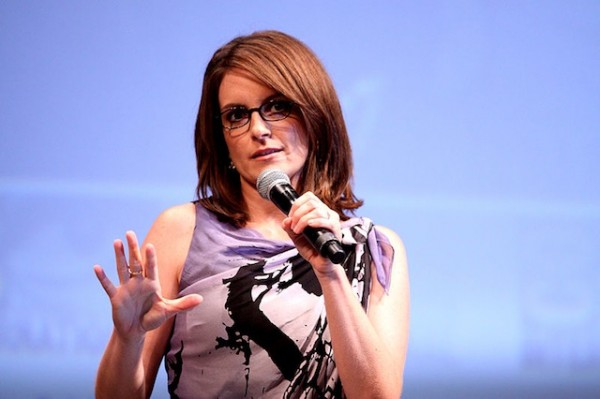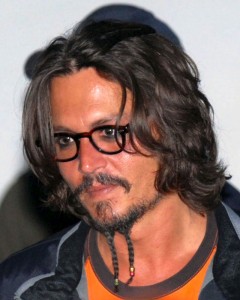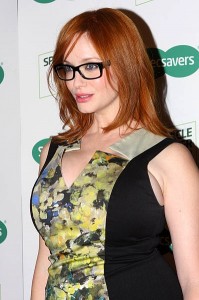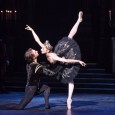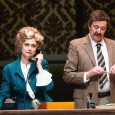I stared at my reflection in mild disbelief.
A girl wearing heavy black frames gazed back owlishly. Behind them were brown eyes covered with prescription contact lenses – which I had switched to several months ago because I was tired of wearing glasses. The irony was almost overwhelming: I’d ditched the thin wire-framed glasses I’d been wearing since third grade in favour of contacts and cheap $10 plastic frames with useless lenses in them.
And what’s more, I now looked cool.
“We’ve only got a few of those left,” the store assistant told me. When I asked if the specs were big sellers, she nodded enthusiastically. “They’re actually really popular. We even sold out at one stage.”
Over the past decade, glasses have gradually elbowed their way to the forefront of fashion. Specs are now seen adorning famous faces, strutting their stuff on high-fashion runways around the world, and are fast becoming one of the hottest must-have accessories on the market.
It’s a far cry from the days when glasses were just for geeks or frumpy girls in need of a makeover. Now, geek is chic, and the vision-impaired around the globe can rejoice in this newfound obsession of popular culture.
Bespectacled kids might perhaps find some relief from being taunted in the playground for being a ‘four-eyes’ now that their eyewear is in. The fashionable and famous around the world are now frequently snapped by the paparazzi wearing glasses, and several have launched their own ranges of frames.
Victoria Beckham is set to launch her own range of designer eyewear next year and husband David regularly wears his own specs as part of his image. Mad Men star Christina Hendricks recently visitedAustralia, promoting Spec Savers and proudly declaring that her husband finds her even more “sexy” when she puts on some frames.
And that’s not to mention the likes of Johnny Depp, Tina Fey, Tom Ford, Cate Blanchett, Justin Timberlake, Anne Hathway, Robert Downey Jr, and a host of other stylish celebrities for whom glasses are either part of their essential look or have become recent additions to their red-carpet wear.
So how have glasses gone from being simply functional to fashionable?
Laurie Foster, optical dispenser at Castle Hill Sight Centre, has witnessed several major changes in the realm where vision correction and style intersect, but none have ever propelled glasses to such an overwhelmingly favourable status in popular culture before.
“Glasses aren’t just a visual aid any more – they’ve transcended that to become a fashion item,” says Foster.
“I first noticed it happening about 10 or 15 years ago and it’s shocked me. Some people will even buy glasses off the wall, pop out the lenses, and wear them. Because it’s a fashion statement.
“We’ve had people come in who are about to go for a job interview who have said, ‘I want a pair of glasses, I’m about to go for an interview.’ And it hasn’t just happened once or twice, it’s happened a fair bit.”
It seems these days everyone wants a stylish set of frames on their face to subtly alter their visage. The sexy secretary/librarian and the distinguished, intellectual gentleman are looks that people of all backgrounds now want to emulate.
But this is definitely a more recent trend compared to earlier times.
“Thirty to forty years ago people might have laughed at you, had you envisioned this happening,” Foster says. “Back then it wasn’t cool to be seen wearing glasses unless you were old or had some visual defect. Even then, you were often labelled a nerd.”
Historically, glasses have been around for a long time. The tradition of making eyeglasses for vision correction goes back to1286, where the first specs were made in Italy. Johannes Kepler was the first to show how concave and convex lenses could fix short-sightedness and far-sightedness respectively in 1604, and Benjamin Franklin invented the first bifocals in 1784. The style of frames we know today, held in place by rigid arms that curl around behind the ears, was developed by London optician Edward Scarlett in 1730.
Frames were traditionally hand-carved or worked from materials such as wood, animal horn, or tortoise shell. It wasn’t until the early 1920s that mass manufacturing of spectacle frames took off, when plastics (or acetates) became a much cheaper alternative to animal products, but were still able to carry the same appearance. Over the ensuing decades fashions would go through multiple stages, showering society with the bug-eye, cat’s eye, browline, horn-rimmed, wire-framed and rimless styles, and almost every possible variation in between.
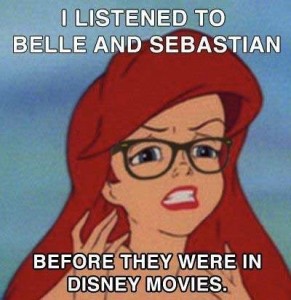 These days thicker frames with larger lenses are in, harking back to retro styles of former decades. Of course, it’s all part of a larger cycle. “Fashion relies on cycles,” Foster claims. “Some people come into our shop and ask for the ‘latest thick glasses’ – and they look stupid in them! But they must have them, and they buy them.”
These days thicker frames with larger lenses are in, harking back to retro styles of former decades. Of course, it’s all part of a larger cycle. “Fashion relies on cycles,” Foster claims. “Some people come into our shop and ask for the ‘latest thick glasses’ – and they look stupid in them! But they must have them, and they buy them.”
For this trend, we have a couple of highly prominent societal subcultures to thank: the emo and the hipster. Both the sensitive, melancholic souls in black and the carefully-constructed ironic types shunned all that was mainstream and chose to create iconic looks that stood in contrast to the prevailing fashions of the day. In fashion’s inevitable way, these groups are now at the forefront of popular culture and dictating what is cool and on trend. Much to the chagrin of hipsters everywhere, more and more people are flocking to embrace their archetypical look. They have truly become mainstream.
Now, the classic thick black frames are not just the most fashionable eyewear around: they’ve become a symbol for hipster culture everywhere. Across the Internet, memes – images with humourous captions that spread like wildlife across the web as they are shared between users – featuring animals and cartoon characters wearing the classic glasses have proliferated. Any ordinary cat or Disney mermaid is suddenly ‘hipsterfied’ with some snappily Photoshopped specs pasted onto their faces, usually accompanied by a sarcastic caption that reflects hipster culture in general.
It’s this instant association between a style and a subculture or an individual that makes spectacles an important part of identity formation. In the same way it may be difficult to imagine a hipster without their ironic frames, could we envisage Buddy Holly without his signature specs? Or Gregory Peck’s portrayal of Atticus Finch in the classic To Kill a Mockingbird?
Even superheroes need glasses to mask their true selves.
“As soon as Clark Kent takes off his glasses, he’s not Clark Kent any more. He’s Superman,” Foster points out. “Those glasses are the only thing that really stop people from recognising him.”
Glasses can be just as important as a striking tattoo or unconventional hairstyle in forming a distinct personal image.
And nowhere is the need for instant recognition more important than in the world of the celebrity. An increasing number of celebs are now embracing the trend, with many wearing specs to movie premieres and other red-carpet events. Naturally, their presence in the fashion liftout of your Sunday paper, or splashed across the blogosphere alongside running commentaries of their outfits, has a dramatic influence on all us viewers who glance enviously at their stylish looks.
The desire to emulate those we admire is strong – and glasses designers are all too aware of this fact. Milena Cavicchioli is the vice-president of marketing for the Luxottica Group, a Milan-based eyewear company that controls the manufacturing, rights and licensing for high-profile brands such as Prada and Versace, and she understands the trend completely.
“Think of Meryl Streep on Oscar night,” Cavicchioli said to the LA Times in April this year. “She was wearing beautiful frames. And she’s not the only one…when people are looking at [celebrities] them to see what the latest trends are, them wearing frames is a huge support and endorsement.”
Designers have, of course, been quick to jump on this lucrative bandwagon, with the industry now “swamped” with big brand names.
“It’s a huge industry that has just blossomed so much in these last twenty years,” Foster says. “It’s a multi-billion dollar industry…like the oil industry. You think of a name, and they’ve probably got a glasses brand on the market: Prada, Versace, Dior, right down to Barbie or Hush Puppies. It’s a money-making business, and while there’s money in it, people will exploit it. And people will keep buying it. People want to wear a status symbol on the side of their glasses.”
The idea that glasses are sleek and sexy is a world away from the old adage popular in the fifties and sixties that declared “boys don’t make passes at girls who wear glasses” (as a lifelong specs wearer, I must say that my teenage years were an unfortunate confirmation of this). It points to a growing acceptance of wearing glasses throughout our culture and society, which is great news for the myopic, the hyperopic and the astigmatics amongst us.
“I’d say in the last 10 to 15 years they’ve become more and more acceptable,” says Foster. “It’s all about acceptance – people want to be accepted. If you wear glasses, that never used to happen. Teenagers will come into the shop now and really want glasses, telling me that all their friends at school wear them and they want to be in that group. When I was young, nobody wanted them. It was like the plague. It meant that you were inferior somehow.”
The association of glasses with inferiority persisted for a long time in our culture.
“There was always this image of someone fit and healthy who didn’t need to wear glasses to aid their vision,” Foster continues. “Glasses were always consigned to those of lesser physical attributes…intelligent, but not so buff. Thus the ‘nerd’ connotation.”
Thankfully glasses are no longer signs of inferiority, but they are still firmly associated with the intellectual giants of the world – the nerds, the geeks, and the brainy. This raises an important question: are we simply moving towards a growing acceptance of glasses, or is it more a growing acceptance of geeks?
With the tidal wave of support for specs, it seems geeks are quietly following in their wake. The computer programmers, rocket scientists and sci-fi enthusiasts of the world have been able to enjoy a promotion from the basement of society to a higher level of respect. Popular sitcoms such as The Big Bang Theory or The IT Crowd have become enormously successful as viewers tune in to watch stereotypically geeky characters navigate life and relationships. Such shows are now firmly entrenched in popular culture and it appears society has a newfound admiration for the intellectually gifted. Their quirks and social awkwardness have become endearing personality traits rather than attributes to be ridiculed.
As Irene Adler declared in Steven Moffatt’s Sherlock, “brainy is the new sexy”.
This glorification of the geek has spread to the point where we no longer need to hide secret nerdy obsessions for fear of mockery. Being a fan of sci-fi doesn’t carry the stigma that it once did, with comic book conventions like Supanova or TV shows such as Doctor Who attracting more than just a small cult following. Indeed, tenth doctor David Tennant, with his ‘brainy specs’ and unconventional charm, has become an icon of ‘geek chic’ style worldwide.
An interest in video gaming has grown steadily more popular over recent years, especially amongst female gamers, with online communities allowing enthusiasts to connect and hobbies to flourish. And reality TV shows such as Beauty and the Geek have become ratings successes, proving that we’re spending more time watching geeks on our screens than ever before. One wonders, however, if the show’s producers were a bit behind the times when the majority of the ‘geeks’ actually lost their glasses as a result of makeover sessions.
Perhaps this growing acceptance is due to our modern obsession with technology – and the recognition that we need smart, brainy types to keep developing the devices we love. Brain power over brawn is no longer a sign of weakness as more and more people recognise that we need geeks to keep our smartphones, laptops and Internet running smoothly.
This obsession with technology completes a loop when it comes to optometry. “Computers and glasses kind of go hand in hand, because if you’re going to be staring at a screen all day long, you’re going to need them,” Foster says.
He also identifies gaming as a major contributor driving the need for glasses, and claims that gaming has helped the optical industry “enormously”, with healthy people developing what he calls “pseudo-short-sightedness”.
“Eventually, when you’re looking at a close point for too long, the muscles in the eye get keyed in to that focal range,” Foster explains. “Then when you look up, things look blurry. All of a sudden they’ve become short sighted. Normally, it’s more of a genetic condition, but these days it’s being driven by a lot of what we do.”
This rise in the need for prescriptions will probably ensure that glasses are around in popular culture for a long time, since so many of us need them. According to Foster, most people over age 40 will need some form of visual aid as they develop age-related vision impairments, and many choose to buy cheap ready-made reading glasses rather than shelling out a few hundred for proper glasses or contact lenses.
The popularity of glasses does not necessarily mean the death of contacts, which still prove to be a common choice when it comes to vision correction. But trends are shifting increasingly in favour of specs these days.
“Contact lenses were popular not too long ago because people didn’t want to wear glasses,” Foster says. “Now glasses are coming and taking the place of contact lenses sometimes. Wearing glasses is so much more acceptable now.”
But if fashion moves in cycles, glasses could very well move out of fashion again sometime soon – or could they?
Foster says he can’t see a future where glasses are no longer in vogue, and the rise in prescriptions will cement their place in fashion as well as onto faces. “I can’t see it happening,” he says. “I think they’ll always be a fashion accessory.”
It’s well and truly time to say goodbye to that old movie cliché, where the frumpy, dorky, geeky girl is suddenly transformed from an ugly duckling into a beautiful swan simply by removing her glasses. Who knows, we could even see such teenage transformation movies heading in the opposite direction, with an otherwise ordinary girl given a confidence boost and a new look by slapping on a funky pair of frames.
As for me? I kept my contact lenses and bought the cheap plastic specs. For once I can finally flaunt my natural nerdiness with pride, and for the first time in my life, I feel fashionable to be a geek. The prominent frames may fall out of vogue eventually, but for now I’ll embrace this trend for as long as I can.

